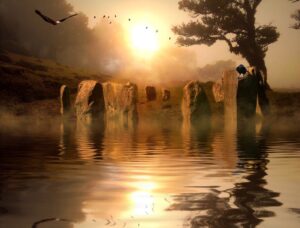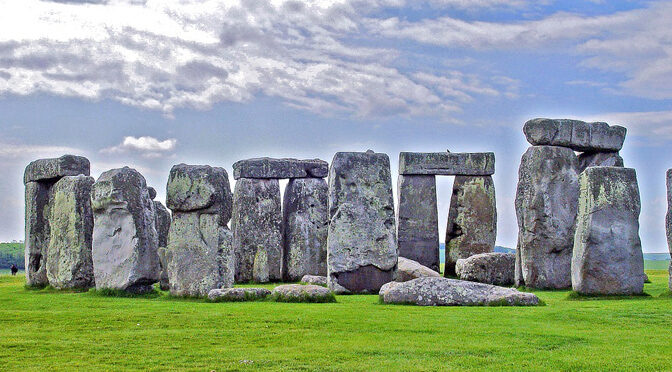Last year, researchers from the Stonehenge Hidden Landscape Project were mapping the underground area of Stonehenge when they stumbled upon a secret anomaly. They thought they had found an even bigger stone monolith site, up to five times the size, that they nicknamed ‘Superhenge’. After beginning the excavation recently however, what they found was completely unexpected.
Ancient Secrets
About 2 miles northeast of Stonehenge beneath Durrington Walls, once home to the Neolithic builders of Stonehenge, researchers believed they’d found over 100 stone monoliths buried.

It actually turned out to be a collection of 5 foot deep pits deliberately filled with blocks of chalk that at one point held 20 foot tall wooden timber posts.
It is believed to be part of a circular monument built 4,500 years ago to memorialize the Stonehenge builders, but further study reveals the project was never finished and the timbers were removed. The monument was replaced and covered with an enormous circular bank of dirt around a mile long that’s still there today.
So why did they suddenly stop? The archaeologist’s predict it could possibly be due to a sudden religious, political, or even cultural change as it was around the beginning of the Bronze Age and the arrival of a new tradition known as Beaker culture.
Adding to the Mystery
The use of wood for this monument also intrigued the researchers since now aside from just Woodhenge, a monument of 168 timber posts that resemble Stonehenge, they can confirm that there must have been a significance for when the ancient pagans used stone and when they used wood.

“One of our project leads, Professor Mike Parker Pearson, is of the view that wood is connected with the living and stone with the dead or ancestors” Says Dr. Nick Snashall, an archaeologist with Britain’s National Trust, “That would make sense in this context as immediately before the putting up of the timber posts this site had been an enormous settlement—the evidence suggests for the builders of Stonehenge.”
This discovery furthers the mystery surrounding Stonehenge and its area, as the researchers believe the builders had used over 300 trees to construct the posts. During the Neolithic period however, the area is thought to have not been heavily wooded, so where they found the wood and how they transported it is still unknown.
Currently, researchers are radiocarbon dating the artifacts so they have a timeline of when it was created and when it was dismantled. This may help with discovering why the posts were lifted vertically and what might have happened to them after they were removed.
Will we ever truly learn the purpose and mystery of Stonehenge? Only time will tell, but every discovery brings us closer and closer to uncovering a secret lost to time. It also makes us wonder just how many more discoveries are waiting to be found right under our noses!

